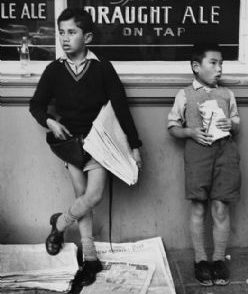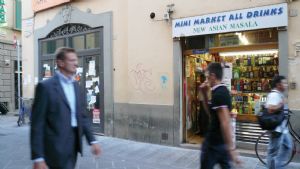Think of the viali, the belt of roads cinching in Florence north of the Arno. Now shut your eyes, mentally replace them with the old city walls, wipe away the modern architecture in the surrounding area, and you’re seeing Florence as it appeared from the 14th to the 19th centuries.
Looking at the scene with eyes wide open—it’s hard to imagine that the land just inside the walls was used for gardens, farms, and sprawling convents – S. Maria Novella originally stood in the midst of vineyards. Outside the walls the land was divided up between private estates and religious settlements.
To this day, however, you can find pockets of land where time has stood still, and many of these time capsules are tucked away in the hilly terrain south of the Arno.
Go to the north end of Ponte alle Grazie, look across the river and up the hill. The expanse of green that you see is the Giardino Bardini. Centuries ago that site would have been less manicured, but as open as it is today. The walls at the top are remnants of the 14th century city walls – unlike those north of the Arno, a good portion of the southern walls survive.
Cross the bridge and head for Porta S. Miniato. As you walk through the city gate, gaze up via Belvedere to your right. Except for the initial cluster of houses and the garden walls, what you see today is close to the rural scene that you would have seen in – let’s say – 1529. But in 1529 the atmosphere here would have been crackling with tension. The autumn of that year marked the beginning of the siege of Florence, an event that developed from the Medici Pope Clement VII’s 1526 decision to defy Emperor Charles V. In 1527 the Emperor retaliated, invading Italy, sacking Rome and capturing the Pope. By 1529 the Pope had switched sides, offering to support the Emperor, on the condition that he restore the exiled Medici to power in Florence.
The siege did not catch the Florentines unprepared. Months before the Emperor’s troops arrived they began destroying potential hiding places outside the walls, including churches. (One of these, on the hill of Bellosguardo, was S. Donato a Scopeto, for which Leonardo had started to paint the Adoration of the Magi, now in the Uffizi). By October 1529, the enemy was camped all around the southern walls: Vasari’s fresco of the Siege, in Palazzo Vecchio, is like a photograph of that moment.
Why not walk smack into the battleground? Climb up via Monte alle Croci and turn right into viale Galileo. The scene of fields tumbling down the hill is idyllic now, but in October 1529 the Imperial army, stationed at Giramonte, had its cannons pointing straight at San Miniato, recently fortified by Michelangelo. The Florentines packed earth over the exposed side of San Miniato, blanketed the bell-tower with mattresses, and pointed their cannons straight at Giramonte.
To walk up to Giramonte cross viale Galileo, enter the Passo dell’Erta, turn right into the trench-like via Giramonte, and continue to piazza Unganelli. You are now standing where the enemy had placed their cannons. Proceed up via Torre del Gallo to where the wall is low. Look left and you’ll see the bell-tower of San Miniato, just as the Imperial soldiers saw it when they took aim in 1529.
The enemy camp was spread over most of the hills south of Florence. You can savour a bit more of the time capsule by walking down via Erta Canina, which will bring you back to Porta S. Miniato, or you can return by way of via S. Leonardo, to enter Florence at Porta S. Giorgio.
For energetic walkers a stroll to Bellosguardo is a must in this dip into history. Go to Porta Romana and walk up via Ugo Foscolo – after the sharp turn to the left, look over the walls and you’ll be surprised by views of timeless rurality. Continue to the top and turn right into via S.Maria a Marignolle. Take the first street on your right (via Piana), which leads to piazza Bellosguardo. From there go to via Bellosguardo for a breathtaking panorama of Florence. Look down and you will see where the church of San Donato a Scopeto had stood until 1529.
In August 1530 Florence capitulated. Though the city was spared being sacked, the enemy had cut off food supplies early on to ensure that Florence slowly starved. At the end Florentines reputedly ate anything – cats and rats included – together with produce grown on top of their houses.
Next time you have a bird’s-eye view over Florence, imagine gardens in place of the broom cupboards now seen on most terraces. And for direct contact with the years of the siege, go to the church of S. Jacopo sopra l’Arno. Touch the portico columns: they come from Bellosguardo, from S. Donato a Scopeto – recycled fragments that miraculously escaped being smashed in 1529.







